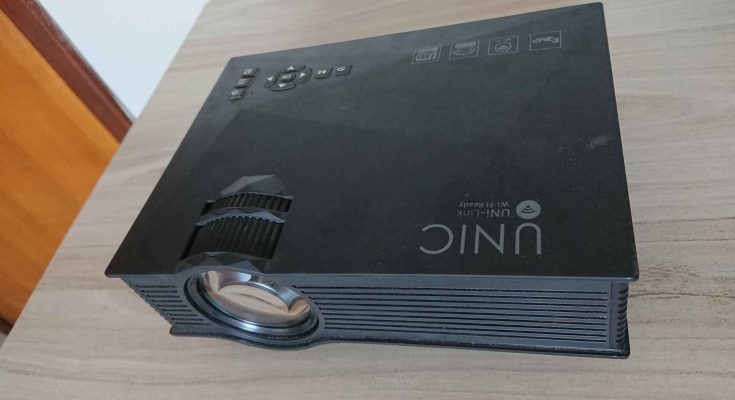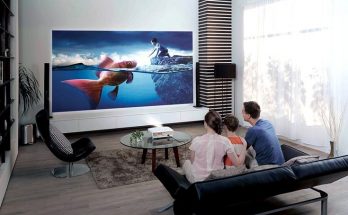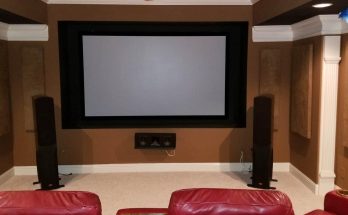Most projectors are designed with a dedicated cooling system, with an exhauster and an ejector fan working continuously to cool the lamp’s central part. But suppose the machine works for many hours continuously without stopping. In that case, the temperature of the machine body is often higher than usual, resulting in consumers feeling the projector is hot when exposed. These bulbs generate a tremendous amount of heat and can quickly reach a temperature of 200-300 degrees while in operation.
The temperature on the machine is too high, exceeding the allowable limit of the projector because the projector body has a sensor system that continuously measures the temperature and returns the signal to the CPU.
We will have many causes and reasons for them to become hot. One of the main reasons is that the exhauster in the projector has a problem, which is a cooling element and works continuously when the projector is working. Each fan on the projector has a rev counter mounted on the motherboard. If the exhauster does not rotate for the specified number of revolutions, the projector will automatically turn off to protect components such as light bulbs, power, or mainboard.
And there is another reason due to the impact of the external environment, which may be the projector’s installation in a space with a lot of dust and mold without periodic cleaning and maintenance. This causes dust and mold to arise, making the cooling element worse, leading to the projector overheating and turning off itself.
Other things to watch out for are ensuring that you don’t leave the projector in direct sunlight, as this will not help the projector cool down.
How to use the machine effectively so as not to be affected when it heats up
Airflow:
The projector needs to use air to cool its components. Air flows in for cooling, so make sure the vents and exhaust ducts are not blocked:
- Any air vents on the gadget should not be covered or obstructed.
- Make sure the projector isn’t contained or too close to a wall because it needs to breathe.
- Do not set the projector on top of other electronic devices that generate heat, such as DVD players.
Fan:
Do not allow any obstructions to the cooling fan. Listen to know the fan is working correctly, and bring the machine to repair immediately if the fan does not work well.
Room temperature:
If at all feasible, avoid placing the projector near a heatsink in the room, such as over the radiator. If the space is persistently heated, you may require an additional cooling system.
Height:
If the projector is being used at an altitude, you may need to enable the option to select the altitude operation mode. This will cause the fan to run at a higher speed in high altitudes with thin air. You can refer to the user manual for this information.
Using the projector:
- Using the projector in its brightest mode will hotter, shorten lamp life, and use more electricity.
- Do not move the projector when it is hot – this may cause the bulb to burst.
- Check the projector’s user manual. The projector’s safety guide avoids problems related to projector mounting and placement.
Technical reason:
The most effective way to fix it is to monitor the error status and bring the machine to a projector repair center for inspection. Since it’s a hardware-related error, you won’t be able to fix it at home. In addition, if you do not have much experience in handling the machine, it is easy to make mistakes.
FAQs
Why is it necessary for a projector to generate heat?
To produce light, a projector must also produce heat. Although I am not a mechanical expert, our investigation revealed that heat aids the projector by displaying the complete range of colors on the color wheel. When the color wheel is first turned on, it spins continuously and can continue to do so as long as it is kept at a specified temperature. It’s also why there will be some fan noise from all projectors. They perform an excellent job of regulating their internal temperature, ensuring that they do not become overheated.
Is it typical for my projector to take more than a minute to warm up?
It is dependent on the age of your projector. The most typical indicator that you’ll need to replace your bulb in the coming year is if it’s taking longer to warm up than it used to. Calling the manufacturing business is the most excellent option because they will know their goods better than anybody else.
Is the projector light blinking as a warning?
The projector may be on or heating up if the power button light is green or flashing green. The projector may be in standby mode or switched off if the power light is orange or flashing orange.
When the light flashes orange or red, it usually means the battery is running low, or the light needs to be replaced. If the temperature indication on your projector is flashing orange or red, it’s possible that it’s overheated or needs to be cleaned. Remove any items that may be obstructing the projector’s vents and clear the area around it of debris.
Should the projector be kept in a glass cabinet?
As with a raincoat, putting the projector in a glass cabinet will make the unit exceedingly hot. The mainboard fire and balloon explosion will occur shortly when the machine’s hot air flow is secreted.
Conclusion
Warm-up and cool-down times are included in projectors for a reason. Hopefully, this post has shed some light on why that is. Not everything should get in the way of your home theater enjoyment. We also believe that projectors are a better alternative for home theaters than huge TVs. Fan noise and projector warm-up time, in our view, are minor aspects of our entertainment center. If you don’t have a projector and this is a concern, we can personally witness that you will grow accustomed to this function. It’s not that big of a situation, and evaluations that worry about warm-up time don’t do the projector credit.





